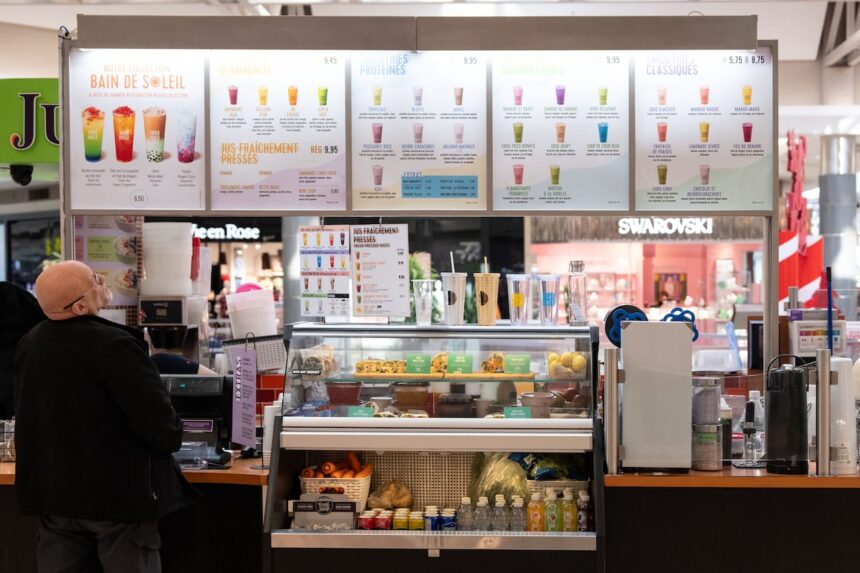While Americans are tightening their belts at fast-food restaurants, Canadians appear to be indulging more frequently in their favorite quick-service meals, creating an intriguing economic divergence between neighboring markets.
Last week, Restaurant Brands International (RBI) – the Toronto-based parent company of Tim Hortons, Burger King, Popeyes, and Firehouse Subs – revealed contrasting performance across its North American operations. Tim Hortons posted a robust 5.8% same-store sales growth in Canada during the first quarter, while Burger King’s U.S. locations saw a concerning 2.1% decline.
“We’re seeing Canadian consumers demonstrating remarkable resilience in their dining-out habits despite inflationary pressures,” said Joshua Kobza, CEO of RBI, during the company’s earnings call. “The Tim Hortons value proposition continues to resonate strongly with Canadians, even as U.S. quick-service brands face mounting challenges.”
This pattern extends beyond RBI’s portfolio. McDonald’s recently reported its first global same-store sales decline in nearly four years, with U.S. traffic notably weakening. Meanwhile, McDonald’s Canada has been outperforming its American counterpart, according to industry analysts at Deloitte Canada.
The divergence points to several key economic and cultural factors. Statistics Canada data shows that while Canadian food inflation has moderated to 2.1% year-over-year in March 2024 (down from 9.7% in March 2023), restaurant menu prices remain 4.2% higher than a year ago – suggesting Canadians are absorbing these increases more readily than their American neighbors.
“Canadian consumers have historically demonstrated greater loyalty to established quick-service brands,” explains Vince Sgabellone, foodservice industry analyst at The NPD Group Canada. “There’s also the reality that Tim Hortons and similar concepts are deeply embedded in daily Canadian routines in ways that transcend pure economic considerations.”
The contrast becomes even more interesting when examining broader economic indicators. Canada’s unemployment rate sits at 6.1%, significantly higher than the U.S. rate of 3.8%. Traditional economic wisdom would suggest this should translate to more cautious consumer spending north of the border – yet fast food consumption patterns tell a different story.
A potential explanation lies in the structure of Canadian fast food chains themselves. Many have implemented aggressive loyalty programs that help insulate them from economic headwinds. Tim Hortons’ rewards program now counts over 11 million active members in a country of 40 million people, creating powerful incentives for repeat visits regardless of economic conditions.
“The loyalty ecosystem we’ve built gives us remarkable insights into changing consumer preferences,” noted Axel Schwan, President of Tim Hortons, during an industry conference last month. “We can rapidly adjust our limited-time offers and promotions to match what Canadians are seeking during challenging economic periods.”
The Canadian fast food landscape also benefits from relatively lower labor costs compared to many U.S. markets. While minimum wage varies by province, ranging from $13.75 in Saskatchewan to $16.55 in British Columbia, these rates generally fall below the $17-20 hourly wages increasingly common in major U.S. metropolitan areas. This allows Canadian operators to maintain more competitive pricing while preserving margins.
Menu innovation also plays a role in the Canadian market’s resilience. Tim Hortons has successfully expanded beyond its coffee-and-donut origins with protein-focused breakfast items and lunch options, capturing multiple dayparts. Similarly, A&W Canada has differentiated itself with ingredient-focused marketing highlighting hormone-free beef and other quality ingredients.
“Canadian chains have been particularly adept at creating distinct positioning that resonates with local values,” observes Robert Carter, managing partner at The StratonHunter Group, a Toronto-based food industry consultancy. “Whether it’s Tim Hortons’ community connection or A&W’s ingredient storytelling, these brands have crafted identities that transcend mere transaction-based relationships.”
The geographical distribution of Canadian population centers also creates favorable conditions for fast food operators. With approximately 72% of Canadians living within 150 kilometers of the U.S. border, chains benefit from clustered market density that streamlines supply chains and operational efficiency.
However, challenges loom on the horizon for the Canadian quick-service sector. Recent changes to temporary foreign worker programs have created staffing pressures for many operators. Additionally, upcoming single-use plastic regulations will require significant operational adjustments across the industry.
“While the Canadian market shows impressive resilience now, we’re cautious about the second half of 2024,” said Sylvain Charlebois, director of the Agri-Food Analytics Lab at Dalhousie University. “Consumer spending patterns typically lag behind broader economic indicators, and we may see a delayed reaction to persistent housing affordability challenges and elevated interest rates.”
The Bank of Canada’s recent rate cuts could provide additional tailwinds for the sector if they translate to increased discretionary spending. However, household debt levels remain at historic highs, with the average Canadian household carrying approximately $1.83 in debt for every dollar of disposable income.
For investors and industry watchers, the Canadian fast food market offers an intriguing case study in how cultural factors, loyalty programs, and operational adaptability can sometimes overcome traditional economic headwinds. As both countries navigate uncertain economic terrain in 2024, this divergence may provide valuable insights into consumer psychology and spending resilience that extend well beyond the drive-thru lane.






